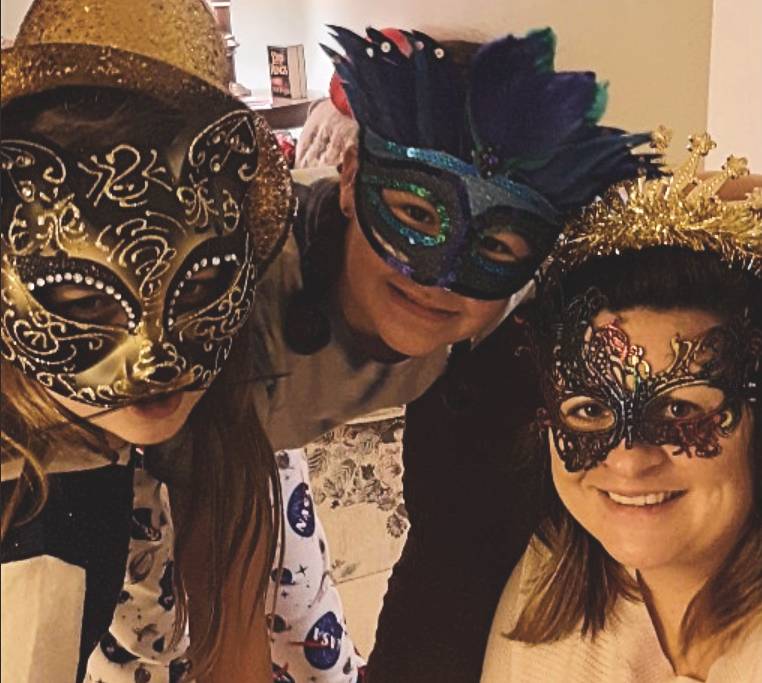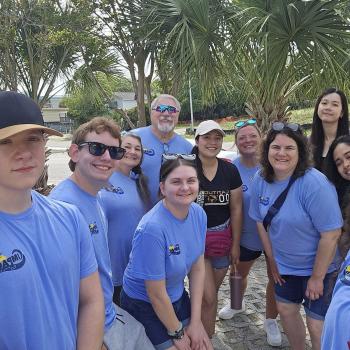
A True Story
As part of a school assignment, a shy but creative student is required to perform in the high school play which happens to be Peter Pan. She looks over the script and finds that the part of the Crocodile has no spoken lines. That appeals to her stage-fright. As she considers what must be done to portray a crocodile under the circumstances of the plot, her ideas begin to generate. One afternoon, she applies to the teacher, “What if the crocodile isn’t really trying to eat Captain Hook? What if she is really in love with Captain Hook?”
The teacher is fascinated and asks, “What are your ideas to carry that out?”
The student responds by building a version of herself as a crocodile. The crocodile will wear a green, scaly outfit with a red boa, and instead of advancing toward Hook with a tick-tock, tick-tock, she will stroll seductively up to him to the tune of “Hey, Big Spender,” walk her fingers up his shoulder and neck, blow into his ear, and bat her long-green-lashed eyes. In the final scene, she will chase him offstage carrying a bridal bouquet and wearing a white veil, thereby freeing Peter Pan forever from Hook’s threat.
What an extraordinary idea! This really happened, and the student was not shy or afraid to perform in her crocodile persona. In fact, she was the surprise hit of the show! As the love-struck crocodile, something entirely different from herself, the student overcame her discomfort at being on the stage–a win for cosplay.
The New Face of Cosplay
Although cosplay (costume + play) was originally connected only to the performance arts, it is now often associated with fandom and conventions. Science fiction, traditional fantasy, anime, comics, video games, and the like are common bonding elements for some who desire to extend the adventure beyond the page or the screen and into real life. In fact, cosplay is evolving more and more into a beneficial form of self-expression. It is useful for mental health, personal growth and expression, and just plain fun.
It has been said that “clothes make the man.” I do believe that what we wear can influence others’ opinions. “Costumes,” in a broad sense of the word, are common. For example, medical personnel and first responders wear uniforms, business professionals wear suits, chefs wear aprons and head coverings, soldiers wear fatigues. The clothing says, “This is who I am and/or this is what I do.” They may even announce, “This is my ideal, heroic self.”
Promoting Mental Health Through Cosplay
Cosplay, then, can be a form of self-expression, and self-expression is necessary to good mental health. Oprah Winfrey said, “If we’re really committed to growth, we never stop discovering new dimensions of self and self-expression.”
That being the case, clothing can be a quiet way of expressing mighty values, beliefs, talents, and character. Suppose a person desires to embody great courage, strength, or even a super power to promote the good of himself, a group, or even humankind. To take up a sword like Arthur, to put on a cloak like Gandalf, to wield a light-saber like a Jedi, or to don the uniform of an army officer, can reveal the heart of an individual. Cosplay may be play, but it allows one the opportunity to “try on” the hidden desires of the heart.
Cosplay and Our Divine Selves
Most of our forms of self-expression spin out of the innate human desire to grow, coupled with imagination. I have often heard people say, “I’m not very creative;” however, the Bible tells us that we are made in the image and likeness of a very creative, imaginative God. According to C. S. Lewis, “I think that all things, in their way, reflect heavenly truth, the imagination not the least.”
J. R. R. Tolkien produced his theory of sub-creation wherein one reflects the inborn God-nature by creating his own landscapes and creatures. “We have come from God, and inevitably the myths woven through us, though they contain error, will also reflect a splintered fragment of the true light, the eternal truth that is God. Indeed only by myth making, only by becoming sub-creator and inventing stories, can Man aspire to the state of perfection that he knew before the fall.” Within our personal sub-creation experiences, we can evaluate our part in our ideal existence and begin to discern what our own part may be. We can find our ideal, heroic self.
That spark of divine imagination is what solves problems. Author L. Frank Baum wrote, “Imagination has brought mankind through the Dark Ages to its present state of civilization. Imagination led Columbus to discover America. Imagination has given us the steam engine, the telephone, the talking-machine, and the automobile, for these things had to be dreamed of before they became realities. So I believe that dreams–daydreams, you know, with your eyes wide open and your brain-machinery whizzing–are likely to lead to the betterment of the world” (The Lost Princess of Oz).
Whether it is for the betterment of the world or the betterment of the self, the immersion into a character who possesses a desired virtue or talent can be an effective tool.
Eight Types of Imagination and Cosplay
In her article “8 Types of Imagination and How to Use Them to Create New Ideas” (TCK Publishing), Kaelyn Barron introduces us to eight facets of imagination and their definitions according to Dr. Murray Hunter (University of Malaysia Perlis).
1. Effectuative Imagination: “the synthesis of existing ideas and information to form a new thought or idea.”
2. Intellectual or Constructive: “Intellectual, or constructive, imagination [that] involves a very deliberate process that starts with a definite idea and is used when considering or developing different hypotheses and possibilities based on available information … This type of imagination is commonly exercised in philosophy, politics, or management.”
3. Imaginative Fantasy: “involves generating new ideas from scratch. It’s the type that comes to most of our minds when we think of the word imagination.”
4. Empathy: “our ability to understand and share the feelings of others, or to put oneself “in their shoes.”
5. Strategy: “the ability to envision multiple possibilities of what could be, and to weigh the possible risks, benefits, and outcomes.”
6. Emotion: “refers to our ability to extend emotional dispositions into emotional scenarios. If you want to elicit certain emotions from others, you’ll need to use your emotional imagination and draw on your awareness of human emotions, which is why this type is in many ways related to empathy.”
7. Dreams: “an unconscious type of imagination. They consist of images, ideas, emotions, and sensations that occur while we sleep … You can use your dreams as a source of inspiration for other creative endeavors.”
8. Memory Reconstruction: “because memory is selective, and reconstructed to fit your view of the world. Memories are also influenced by emotion. To retrieve your memories of people, things, or events, you must use your imagination, which often fills in gaps.”
A Step Toward the Ideal Heroic Self
All these types of imagination can surface in cosplay. Suppose one’s ideal heroic self adventures into the unknown and fights the evils dwelling there. The effectuative imagination might conjure up sleek, neutral, monochromatic outfits with a galaxy patch at pocket level, Star Trek style. If another person’s ideal, heroic self is a wealthy business type, she might wear a white, button-down shirt, a black blazer, and a pencil skirt–intellectual imagination. Imaginative fantasy might show up in a white, lab coat and glasses. Strategic imagination could manifest as a set of tools necessary to whatever characteristic the individual is hoping to project, such as boots and a Western hat. Empathy and emotion may surface as a color palette to which one devotes her wardrobe. Memory reconstruction might show up as your grandfather’s sweater. Dreams, well, what does one dream?
Many dreams dwell in the worlds of myth and spirituality. Whether the mind is excited by books, video games, or a television series, items might be added to a wardrobe to give the appearance or illusion of a particular character or group of characters found there.
Picture for a moment a middle-aged woman, teacher of literature with a love of Tolkien, Lewis, the Arthurian tales, and elusive spiritual worlds, attends a Renaissance Fair. While perusing a vendor’s booth, she finds hooded cloaks of substantial fabric, some black, some white, lined with gorgeous, colorful satin. They are expensive. She hesitates. That’s not in the budget. Then, just for fun, she tries on a black one with a teal lining and looks into the mirror. In that moment, she is transported to a snowy day in Camelot, and the cloak is immediately purchased as her new winter coat.
Perhaps you know the feeling.
A New Generation’s Cosplay
Currently, there are many opportunities to own expressive clothing items. A plethora of online stores exist where one might purchase items of modest to fine quality; vendors at events and conventions offer clothing and accessories for sale; patterns are available to those who sew; it may even be possible to find desired items at antique or thrift stores. Cosplay items can range in price from very extravagant to extremely modest. Remember, it’s yours to create!
The new generation of cosplayers is discovering that a costume has real value. By the choice of a simple or flamboyant outward adornment, the individual may overcome a perceived deficiency, try out a desired value or characteristic, exercise creative muscle, or just have a little fun. Cosplay is a result of imagining, of dreaming, and of seeking to become the ideal, heroic self. “We all have an obligation to daydream. We have an obligation to imagine. It is easy to pretend that nobody can change anything, that society is huge and the individual is less than nothing. But the truth is individuals make the future, and they do it by imagining that things can be different” (Neil Gaiman).













